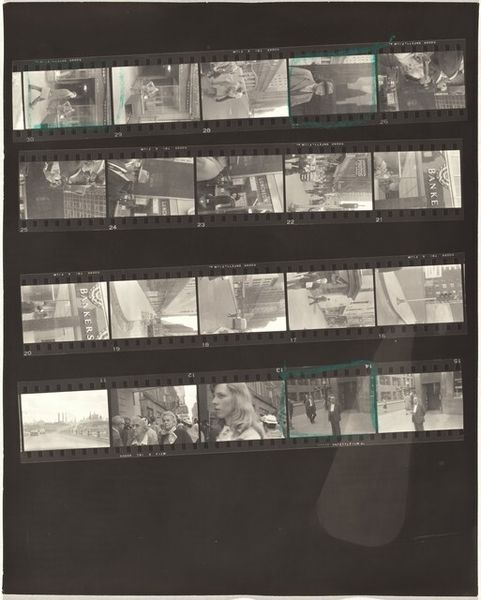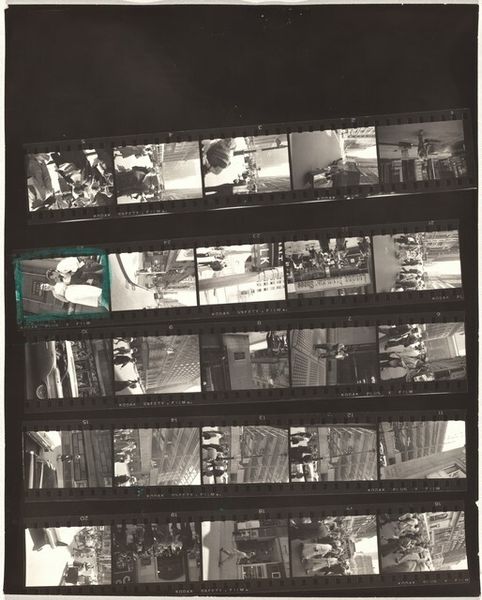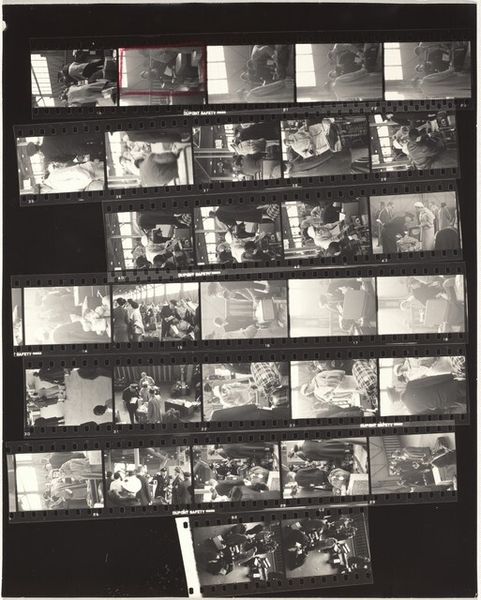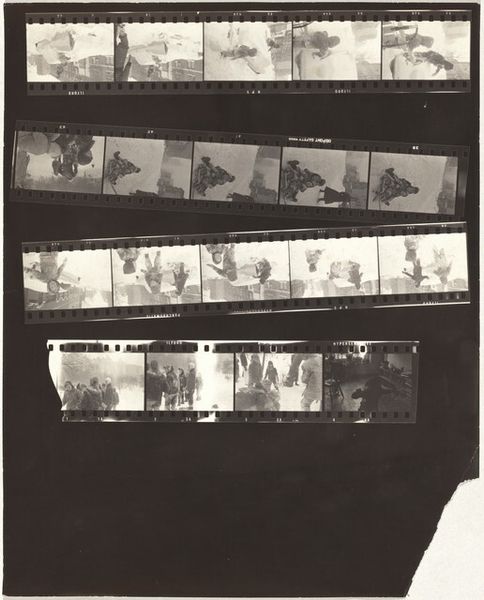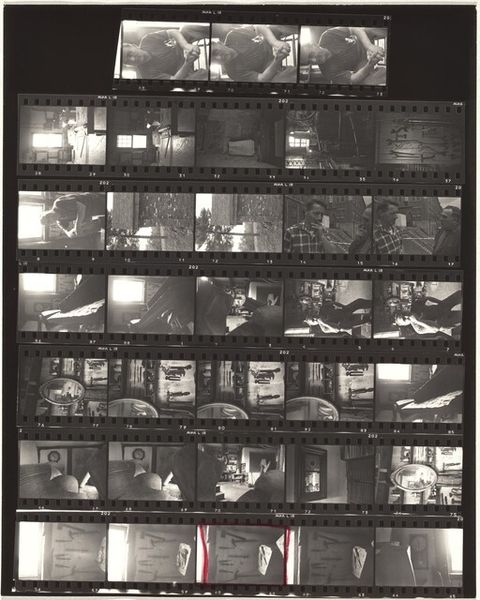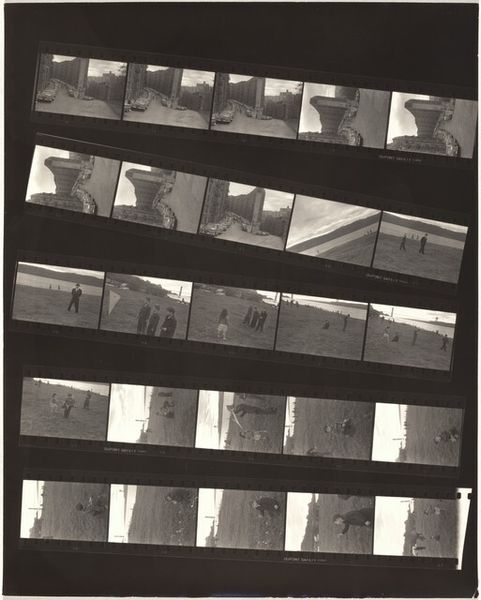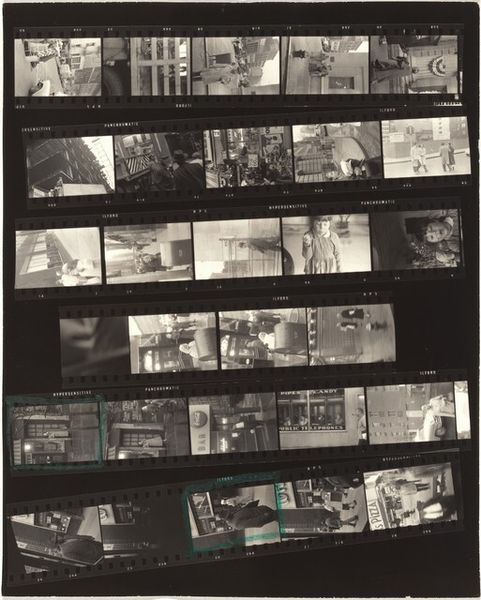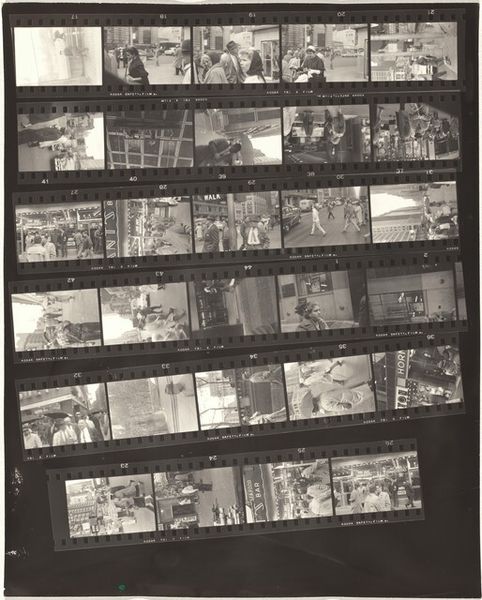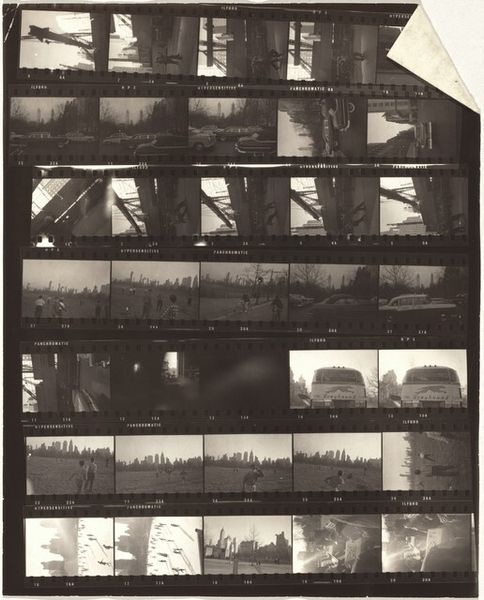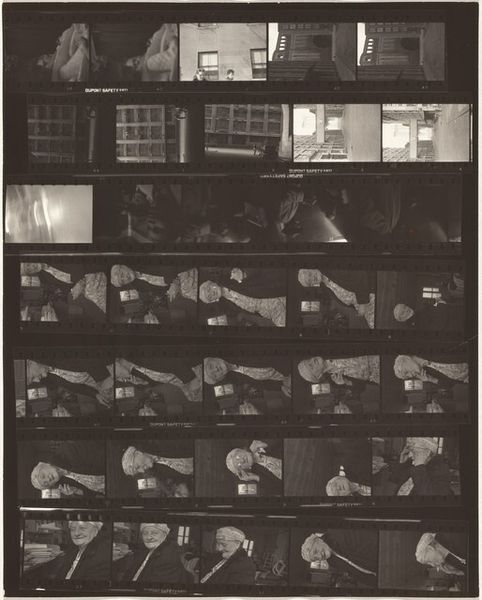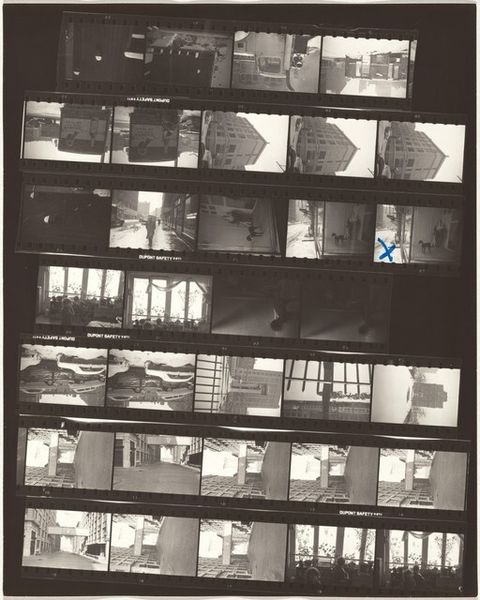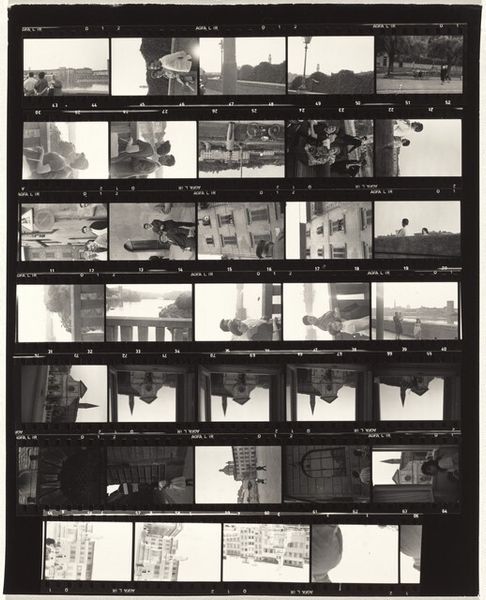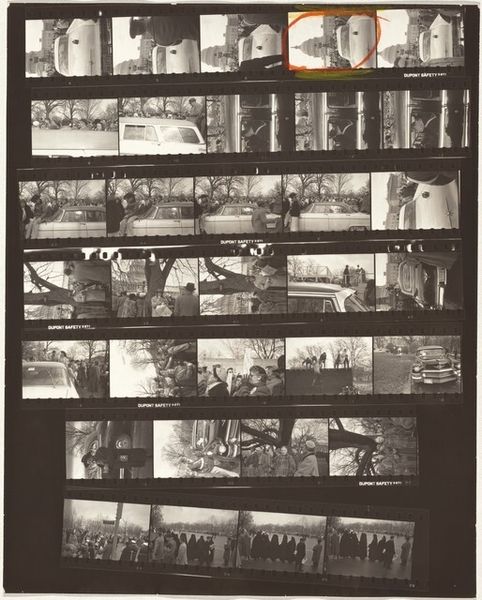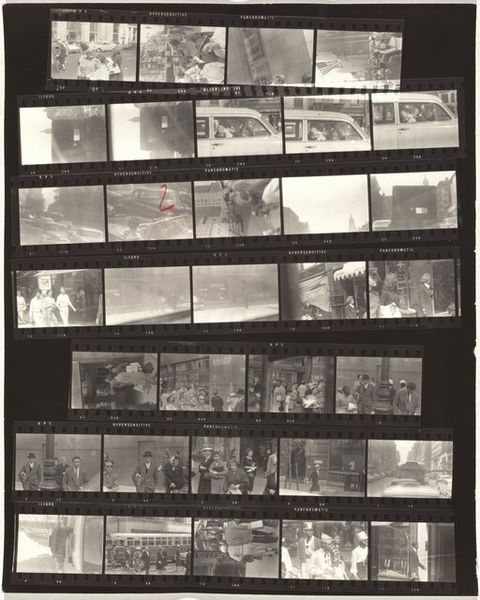
#
print photography
#
film photography
#
wedding photograph
#
wedding photography
#
ceremony
#
archive photography
#
couple photography
#
monochrome photography
#
film
#
celebration photography
Dimensions: overall: 25.2 x 20.2 cm (9 15/16 x 7 15/16 in.)
Copyright: National Gallery of Art: CC0 1.0
Editor: So, this is "New York City 2" by Robert Frank, taken sometime between 1957 and 1958. It's a strip of black and white 35mm film, with a series of candid shots. The mood seems kind of gritty, like a snapshot of everyday life. What do you see in this piece? Curator: I see a layered narrative about postwar America, especially its complex relationship with national identity. Frank, a Swiss immigrant, offers an outsider's perspective, challenging the idealized images of the American Dream often presented in mainstream media. Editor: How so? The images are hard to decipher in places. Curator: Precisely. The blurred, sometimes obscured, quality of the images disrupts the clean, easily digestible narratives we're accustomed to. For example, notice the stark contrast between the patriotic imagery in some frames and the apparent emptiness in others. What does that juxtaposition suggest to you? Editor: It feels almost cynical, like he's questioning the gap between the ideal and the reality. Especially the shots that appear inside a vehicle... is he separated from the city somehow? Curator: That's a crucial observation! He is both physically present and symbolically distanced. The car becomes a liminal space, a metaphor for his position as an observer, never fully integrated, always slightly removed. This allows Frank to critically examine issues of race, class, and consumerism that were often glossed over during that period. Editor: It's interesting how a simple strip of film can be so loaded with meaning. I definitely didn't see all of that at first glance. Curator: Art invites us to dig deeper. Frank's work reminds us that seemingly candid images can be powerful critiques of the society that produces them. Editor: This really encourages a more critical lens for interpreting even seemingly simple documentary photos. Curator: Absolutely. It encourages us to question whose story is being told and how.
Comments
No comments
Be the first to comment and join the conversation on the ultimate creative platform.
